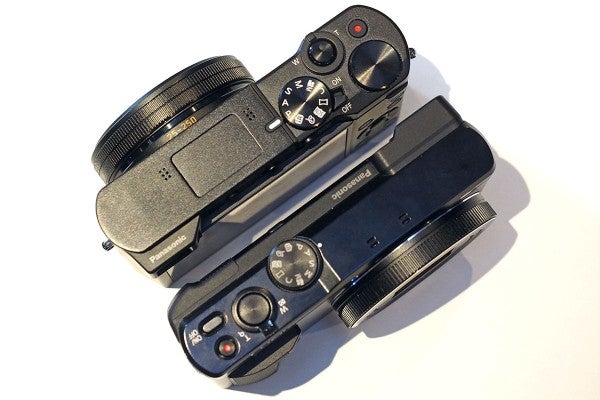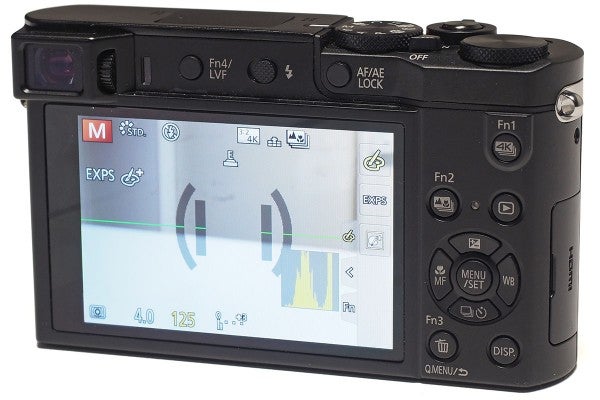Andy Westlake tests Panasonic's pocket travel camera with a 1in sensor and 10x zoom lens
Panasonic Lumix DMC-TZ100 review
Panasonic Lumix DMC-TZ100 review: First look
This is an archived version of our original hands-on first look article about the TZ100, with additional images

The Panasonic TZ100 uses a 20.1MP 1in sensor for improved image quality
At a glance:
- 1in, 20.1-million-pixel sensor
- 25-250mm equivalent f/2.8-5.9 Leica DC lens
- ISO 125-12,800 stnadard, 80-25,600 extended
- 1.160-million-dot electronic viewfinder
- 1.04-million-dot 3” touchscreen
- 4K 30p/25p video recording and 4K Photo
- Available in March for £529
Ten years ago, Panasonic launched a whole new class of camera, with its DMC-TZ1 ‘travel zoom’ that managed to combine a long zoom lens with a relatively pocketable form factor. It’s dominated the market for such cameras ever since, progressively extending the zoom range and adding features. Its most recent models, the TZ60 and TZ70, added such desirable extras as electronic viewfinders and raw format recording, and were some of the best-selling cameras of 2014 and 2015.

The TZ100 is only slightly thicker than its 1/2.3in sensor cousins such as the TZ80
The problem with this camera type has generally been that fitting a long zoom into a small body requires use of a tiny 1/2.3″ sensor, compromising image quality. In turn this means that the cameras have generally been pitched at casual photographers rather than enthusiasts. With its latest model Panasonic has addressed this head-on, by using the much larger 1in sensor seen in many recent compacts. This means that, at a stroke, the TZ100 becomes the best travel zoom model we’ve yet seen.
Features

A small flash unit pops up from the top plate
At the core of the TZ100 is the familiar 20.1MP 1in sensor that’s found its way into a lot of cameras over the past couple of years. However, while these have had either a short zoom in a small body, or a long zoom in a large SLR-like body, Panasonic has managed to fit a 10x 25-250mm equivalent zoom lens in a camera that’s barely larger than its existing small-sensor models, at 110.5 x 64.5 x 44.3mm and 312g (in effect, the protruding section of the lens barrel is about 1cm deeper). With a very decent wideangle to telephoto range, the lens should cover the majority of photographic opportunities. Panasonic’s Depth From Defocus technology promises fast autofocus, while hybrid optical / electronic 5-axis image stabilisation is on hand to keep images sharp.
The maximum aperture ranges from f/2.8 at wideangle to f/5.9 at telephoto, via f/4 at 70mm and f/5.6 at 180mm equivalent. This means that the FZ100 won’t be such as good choice for low-light shooting as cameras like the Canon PowerShot G5 X with its 24-100mm equivalent f/1.8-2.8 lens, or the rather larger Sony Cyber-shot RX10 II with its 24-200mm equivalent f/2.8 optic. It’s the main price you pay for fitting an extensive zoom range into a relatively small camera.

The TZ100 has a small corner-mounted EVF, and the LCD is touch sensitive
Like other recent TZ models, the TZ100 has an electronic viewfinder tucked away at the top-left of its body. With 1.16-million-dot resolution, it’s acceptably sharp, but it’s not very large, giving something of a ‘postage stamp at the end of a tunnel’ experience. It’s about the only disappointing aspect of the camera, and I would have been happier to see a larger viewfinder on board, even at the expense of increased size and price.
On the back is a 3” LCD, and in a very welcome move, Panasonic has added touch sensitivity. This enables AF area selection by touch, even with the camera held to your eye, and several 4K-related tricks along with Panasonic’s usual excellent touch interface. Unfortunately the screen isn’t articulated, which is bad news for selfie-lovers. However Wi-Fi is built-in for remote control of the camera and image sharing. Other features include a small pop-up flash, and in-camera raw development.
Build and Handling

The TZ100 has a round-lens control ring and a top-plate control dial
With a price tag of £539, the TZ100 is clearly aimed more towards serious photographers than its small-sensor siblings, and its build quality and handling reflect this. It feels more solidly-made, with a sturdy metal shell, and the external controls are more extensive. The smoothly-rotating control dial around the lens is joined by a top-plate dial for adjusting exposure settings that clicks positively as it turns, and the d-pad on the rear gives direct access to key settings. There are also four programmable function buttons. So while the TZ100 should still be a very capable point-and-shoot, it won’t leave enthusiast photographers feeling short-changed in terms of controls.
4K video features

Alongside all-black, this unusual ‘silver’ version will be available
Panasonic considers 4K video recording to be one its core technologies, and has included it on the TZ100. Movies can be recorded at 3840 x 2160 px resolution and 30 or 25 fps, or at Full HD (1920 x 1080 px) if you prefer. Sound is recorded using built-in stereo mics. One neat new feature is ‘4K Live cropping’, which allows footage to be recorded as a Full HD-size crop from the 4K stream, which can be zoomed or panned around the image area using the touchscreen, without having to move the camera.
Panasonic has also thrown in its latest 4K Photo mode. This allows easy extraction of 8MP still images from bursts recorded at 30fps and saved as MP4 files, and even gets its own button on the back of the camera. In a slightly more gimmicky fashion, there’s also Panasonic’s latest 4K Post Focus mode, which records a series of frames at different focus distances as a movie file and then allows refocusing after the event.
First Impressions

AP’s Callum McInerney-Riley tries out the new TZ100
While travel zoom cameras are incredibly popular among casual photographers, they have for a long time been the poor relations of enthusiast-oriented compacts with larger sensors, due to sub-par image quality. As the first camera in its class to feature a 1in sensor the TZ100 promises to change all that, and with its solid build and decent external controls, it has the potential to be a great option for photographers when they’re travelling light once it goes on sale in March. It certainly redefines its class, and we’re really looking forward to getting our hands on one for a full review.




